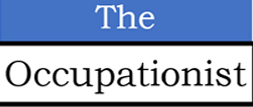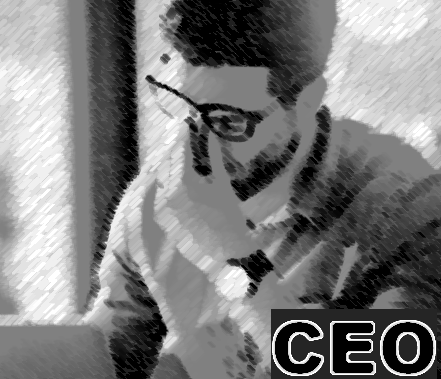Its lonely at the top is an old adage. In the world of social media coupled with advances in AI, its lonelier in the corner. The role of a CEO has been around for about a hundred years. The look and feel of a CEO has never been the same. Earlier CEOs were well-groomed and wore 3-piece suits; the CEO today wears jeans and is sometimes unpolished!
With the advances in AI, it is not surprising that in future a humanoid Occupational Health physician may advice a humanoid CEO and the ‘real’ employees!
The role of a CEO has dramatically changed. Earlier a CEO would make one or two major business-critical decision in a year; now there are several. Not only has the number of business-critical decision to be made increased but the speed and urgency with which they arise and the expectation to promptly address them has also increased.
The mind-set of the CEOs has undergone a change too. CEOs today are younger and want to prove to themselves, and to others, that they are superheroes and even younger.
Earlier CEOs were well-groomed and wore 3-piece suits; the CEO today wears jeans and is sometimes unpolished!
Outside their work, the CEOs these days run marathons, climb mountains, scuba dive, does bungee jumping and what not. Some CEOs get trained for these activities, some just go untrained. These achievements have become more important for most CEOs as they have more SMV (social medial value) while gardening, walking or enjoying nature have taken a backseat.
Superheroic activities are what some CEOs want to post in social media, and are the new addendum in a CEOs CV, especially the younger ones. It doesn’t end there. There is always the worry about how many people have liked their Facebook. Instagram or LinkedIn accounts. If the likes are less, the stress is more.
Earlier a CEO would make one or two major business-critical decision in a year; now there are several.
When it comes to social media, a CEO is a CEO – there is no age or gender differentiation. Sadly, all are in the same race. A CEO should balance it out and may be seen posting relevant information but must refrain falling into the social media trap as it is a blackhole that will eventually drain off all the energy leaving less energy for the ‘real’ work.
So at one hand you have a CEO who is media savvy, mingles around with most of the employees and displays a relaxed disposition – all good for health. But on the other hand, the CEO is stressed out for lack of time, especially due to activities required to be done for routine work which has increased and allocate time for social media activities – time taken to upload and then looking out for ‘likes’. What the CEO gains, the CEO loses it all and sometimes burns into the gains which is not just the beginning of deterioration of CEO health but also of productivity. The CEOs should be mindful of this.
Daredevil achievements have become more important for most CEOs as they have more SMV (social medial value) while gardening, walking or enjoying nature have taken a backseat.
Decisions taken by a CEO while in a chronically stressful state can be incorrect leading to disastrous consequences. This is where gardening, walking or enjoying nature helps and not stressful activities like trekking, bungee jumping etc.
Striking a balance in what is required. The younger CEOs, especially of startup companies are under pressure to have a presence in social media and they must learn to strike a balance in as much as everyone else should. The number of hours in a day are fixed and at least 7 hours of sleep is necessary. Choose your activities well.
Do not do any super heroic activity to get more ‘likes’ on social media or to impress anyone. Ask yourself – do you enjoy it, do you have the time, and if the answers are yes to both, then go ahead.
As of now, as an Occupational Health physician, my advice to the CEOs will be – just be human and not a humanoid. The human capabilities are limitless while stamina is limited, whereas an AI powered humanoid robot CEO has capabilities limited by human interventions but have unlimited stamina.
Yes, it is good to de-stress, take time off, do exercises but only as much as one can comfortably do. Being physically fit helps, no doubt, but pushing too hard is not your forte. Understand that you are an office-goer CEO and not a star sportsperson.
A CEO need not be chiseled look and need not have disposition of the proverbial Greek god. For that there is Mika, an AI humanoid robot CEO appointed by a Polish rum company Dictador. Mika is the first female humanoid robot CEO that signals a remarkable fusion of AI and corporate leadership and her presence in the boardroom is not just a technological marvel but also a symbol of innovative leadership.
The corner cabin should be a centre of inspiration, innovation and good health rather than be cornered by unimportant things; overexposure to social media being one of them.
As of now, as an Occupational Health physician, my advice to the CEOs will be – just be human and not a humanoid. Outside your core activity, do what you enjoy if you have the time for it. The human capabilities are limitless while stamina is limited, whereas an AI powered humanoid robot CEO has capabilities limited by human interventions but have unlimited stamina.
However, with the advances in AI (Artificial Intelligence), it is not surprising that in future a humanoid Occupational Health (OH) physician may advice a humanoid CEO and the ‘real’ employees!
The advice to a CEO is applicable to all employees, else every desk in the office will turn into a corner cabin liable to be cornered.
The corner cabin should be a centre of inspiration, innovation and good health rather than be cornered by unimportant things; overexposure to social media being one of them.
To know more, contact ____________________________________________________________________________________________
Dr Ajay Sati is an Occupational Health physician who prefers to describe himself as an Occupationist, to denote, ‘an expert in diseases and other concerns of occupations.’ Dr Sati has managed health and wellness programs in industries he worked, like the atomic energy, and energy (oil & gas) in India and overseas. An experienced virtual consultation expert he was involved in many greenfield and brownfield projects providing inputs from health point of view



